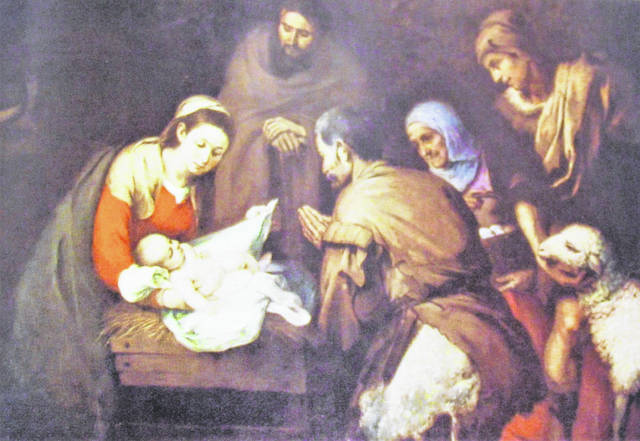
Editor’s Note: It’s been said that Christmas is one of the few holidays that has its own “soundtrack.” The Times-Gazette today presents the ninth installment of a special 12-part series entitled “The 12 Carols of Christmas” that will appear daily through Christmas Eve, relating the stories and history behind some of the best-loved sacred songs of the season.
In Mark’s gospel, Jesus and the disciples were in the towns on the coastline of Caesarea Phillipi when he posed a question to those who were following him.
“Who do men say that I am?” he asked the twelve.
They replied that some believed him to be John the Baptist, others Elijah, some Jeremiah, or one of the other prophets.
Then the question became personal and more direct.
“But who say ye that I am?” Jesus asked.
According to the biblical account, the apostle Peter told him, “Thou art the Christ.”
One could have asked the same question some 30 years earlier in what some Bible scholars believe to have been a hewn out stone feed trough used as a manger in one of the many limestone caves that surrounded the little town of Bethlehem at that time.
Author Kenneth Osbeck in his 1990 devotional of church hymns pointed out that the question “What child is this?” had to have been uppermost in the minds of those present at the birth of Jesus.
Osbeck said it was a question that had been pondered in the 20 centuries since.
It was a question that an insurance salesman attempted to answer in 1865 with a long poem originally entitled “The Manger Throne.”
William Dix was born in Bristol, England in 1837, the son of a surgeon who wanted his son to follow in his footsteps, according to Robert Morgan’s “Then Sings My Soul.”
Dix had no interest in practicing medicine, and Morgan wrote that he later left the Bristol Grammar School and moved to Glasgow, Scotland and made his living selling insurance.
In 1858 at the age of 21, Dix was stricken with a sudden serious illness that left him bedridden for several months, with which came deep bouts with depression, according to Osbeck.
Osbeck said that in desperation, Dix called out to God, who “met him in a new and real way,” and out of that experience came many distinctive and artistic hymns, including the delightful carol that attempted to answer the centuries-old question of what and who this child was — and is.
“What Child Is This?” was set to the melody of the traditional English folk tune “Greensleeves.”
Although more widely known for this carol and “As With Gladness Men of Old,” Morgan said Dix wrote a pair of devotional books, a book for children, and scores of hymns.
Reach Tim Colliver at 937-402-2571


